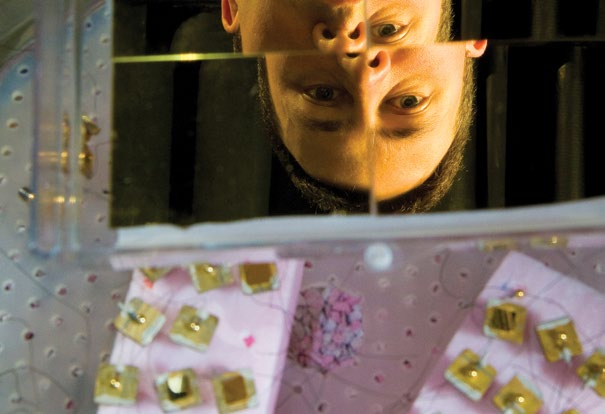Rick Vinci and his colleagues have made a gold-based nanocomposite that could replace semiconductor switches in cell phones, computer wireless devices and other radio frequency (RF) applications. With funding from NSF, DARPA and NASA, they aim to develop high-reliability microelectromechanical (MEM) switches.
Semiconductors have replaced mechanical switches, says Vinci, an associate professor of materials science and engineering, because they have no moving parts and can operate endlessly.
But there are advantages to mechanical switches. Semiconductor switches can leak RF signals even when turned off. Little leakage occurs in a mechanical switch that is turned off. And keeping a mechanical switch turned on requires little power.
To be used in RF devices, says Vinci, MEM switches must be hard enough to endure billions of on-off cycles but not so hard that they lose conductivity. Gold is a great conductor, but soft. Vinci’s group spreads oxide particles evenly through the gold, so it hardens while maintaining conductivity. The process, called sputter deposition, has been used for many years, but Vinci’s group is adding a twist.
They mix vanadium and gold to form an alloy while simultaneously exposing the film to oxygen. Vanadium reacts with oxygen to form vanadium oxide particles, which spread out and are buried by subsequent layers of the alloy.
“The nanoparticles disperse in the gold, which is still conductive and now is much harder,” says Vinci.
Vinci works with James Hwang, director of Lehigh’s Compound Semiconductor Technology Lab, and Profs. Herman Nied (mechanical engineering) and Bruce Koel (chemistry). They have reported their research in the Journal of Applied Physics and filed for a patent on the material.

